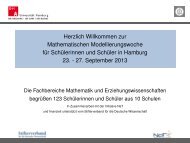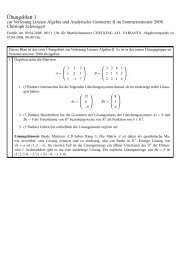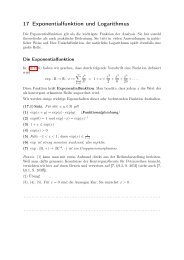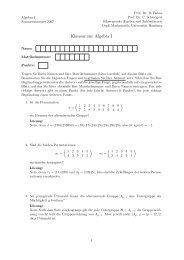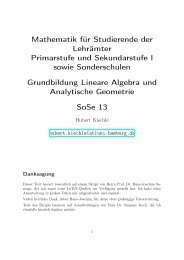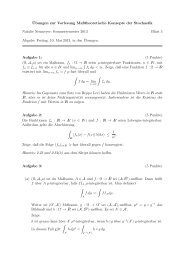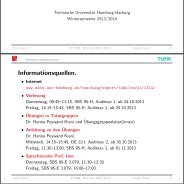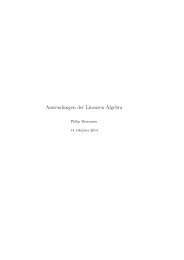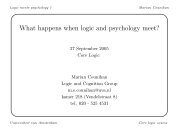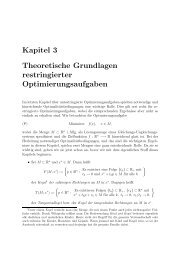pdf file
pdf file
pdf file
You also want an ePaper? Increase the reach of your titles
YUMPU automatically turns print PDFs into web optimized ePapers that Google loves.
3. A coalgebra map is a linear map<br />
such that the equations<br />
ϕ : C → C ′ ,<br />
Δ ′ ◦ ϕ = (ϕ ⊗ ϕ) ◦ Δ and ɛ ′ ◦ ϕ = ɛ<br />
hold. Pictorially,<br />
ϕ<br />
=<br />
ϕ<br />
ϕ<br />
ϕ<br />
= = ɛ<br />
Examples 2.2.2.<br />
1. Let S be any set and C = K[S] the free K-vector space with basis S. Then C becomes a<br />
coassociative counital coalgebra with coproduct given by the diagonal map Δ(s) = s ⊗ s<br />
and ɛ(s) = 1 for all s ∈ S. It is cocommutative.<br />
2. In particular, the group algebra K[G] for any group G with the maps Δ, ɛ discussed above<br />
can be easily shown to be a coalgebra which is cocommutative.<br />
3. The universal enveloping algebra U(g) of any Lie algebra with the maps Δ, ɛ discussed<br />
above will be shown to be a coalgebra which is cocommutative. (This is easier to do, once<br />
we have stated compatibility conditions between product and coproduct.)<br />
Remarks 2.2.3.<br />
1. The counit is uniquely determined, if it exists.<br />
2. The following notation is due to Heyneman and Sweedler and frequently called Sweedler<br />
notation: let (C, Δ, ɛ) be a coalgebra. For any x ∈ C, we can find finitely many elements<br />
x ′ i ∈ C and x ′′<br />
i ∈ C such that<br />
Δ(x) = ∑ x ′ i ⊗ x ′′<br />
i .<br />
i<br />
We write this by dropping summation indices as<br />
Δ(x) = ∑ (x)<br />
x (1) ⊗ x (2)<br />
and sometimes even omit the sum. In this notation, counitality reads<br />
∑<br />
ɛ(x (1) )x (2) = ∑ x (1) ɛ(x (2) ) = x for all x ∈ C,<br />
(x)<br />
(x)<br />
and cocommutativity<br />
∑<br />
x (1) ⊗ x (2) = ∑<br />
(x)<br />
(x)<br />
x (2) ⊗ x (1)<br />
for all x ∈ C<br />
19




